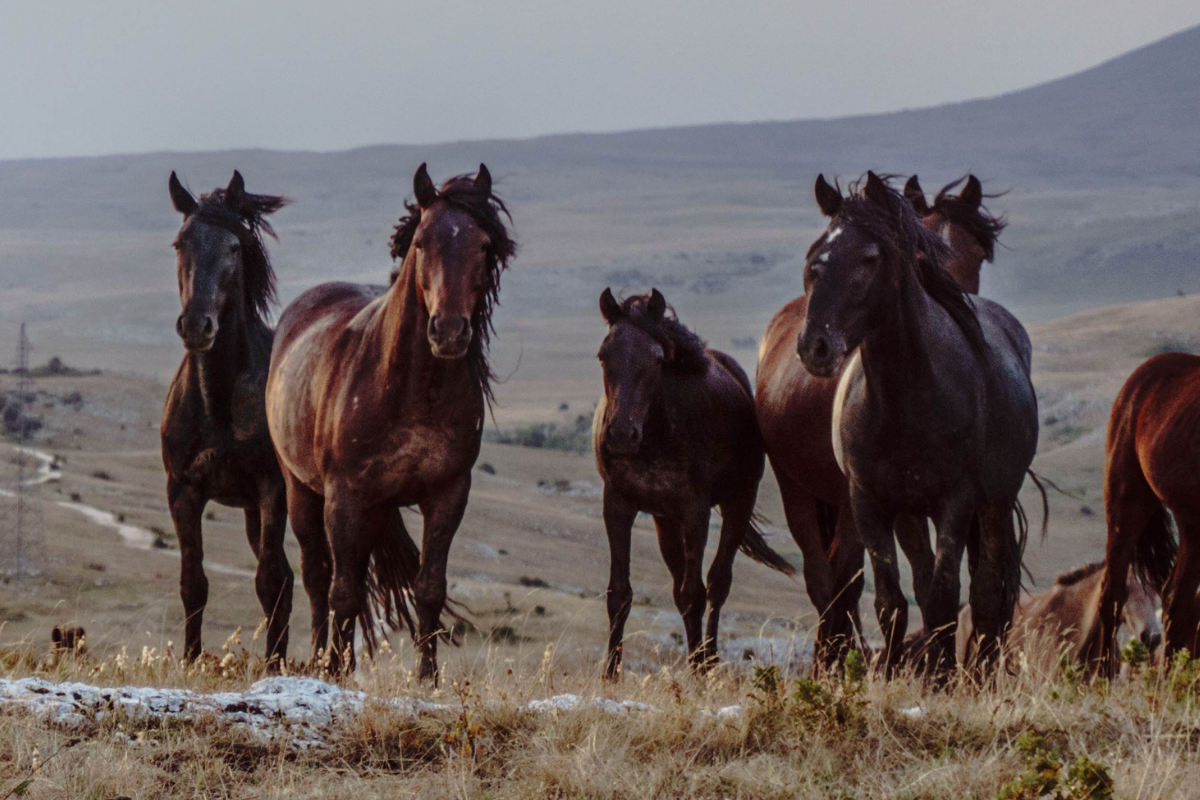by Jennifer Best
Both sides of the political aisle can agree that the U.S. Bureau of Land Management (BLM) has mismanaged wild horses on federal public lands for decades. Wild horses, who embody freedom and perseverance, are routinely chased by helicopters, packed into unsanitary holding facilities and sold for slaughter. At the heart of this cruelty is a dispute about how the government should manage public lands. Should it set aside space for wild horses, other wildlife and vibrant ecosystems, or should public lands merely serve the financial interests of destructive industries?
Ranchers who graze cattle and sheep on public lands for an extremely reduced rate routinely call for the elimination of any wildlife that can compete with or harm their financial interests. Since they view wild horses as competition for forage, many label wild horses as a nuisance or overpopulated.
Colorado has now weighed in on the debate with the “wild horse project,” a new program that Governor Polis signed into law on May 20. The Colorado law suffers from a major flaw—it largely buys into the notion that public lands are reserved for private industry. It encourages fertility control, such as the pesticide porcine zona pellucida (PZP), to limit wild horse populations and restricts the working group from even considering an option that would restrain private grazing and use of public lands.
What supporters of the law don’t want the public to know is that new research shows PZP sterilizes wild horses after multiple uses and results in risky foal birth out of season and behavioral changes that can affect the overall health of the herd. The widespread use of PZP is contrary to the true core intent of the Wild Free-Roaming Horses and Burros Act of 1971, which was to restore wild horses as harmonious components of the public land ecosystem.
Importantly, wild horses are not overpopulated. There are a measly 1,527 wild horses in Colorado roaming on 365,988 acres of public land managed by the BLM. The Equid Specialist Group of the International Union for Conservation of Nature’s Species Survival Commission recommends minimum populations of 2,500 individuals for the conservation of genetic diversity. Currently, no single herd management area has a minimal viable population for the long term, nor does the entire state of Colorado.
Nonetheless, Colorado seems to accept BLM efforts to reach arbitrary population targets that it calls “Appropriate Management Levels” (AMLS). As the National Academy of Sciences reported in 2013, “[h]ow AMLS are established, monitored and adjusted is not transparent to stakeholders, supported by scientific information, or amenable to adaptation with new information and environmental and social change.” BLM, who commissioned this report, has never sought to correct these problems.
Colorado should not be throwing taxpayer money on fertility control merely to perpetuate the broken system that sacrifices the protections Congress afforded wild horses in the WHBA to the meat industry and other commercial interests. BLM, who is responsible for managing wild horses on federal public lands, is regularly sued over its mismanagement of wild horses. If Colorado uses this new law to prop up BLM’s broken and cruel management, it will likely invite similar lawsuits.
Of the 245 million acres of public land managed by the BLM, 155 million is open to livestock grazing. By contrast, wild horses are restricted to just 26.9 million acres (which continues to decrease under BLM management), and which they must share with livestock. Upwards of 2 million cattle graze public lands, not to mention millions of sheep, and the government has authorized thousands of oil, gas and mineral extraction projects in these areas as well. These activities, not wild horses, are damaging the environment, fragmenting wildlife habitat and contributing to climate change.
Just look at the livestock grazing permits in the Sand Wash Basin Herd Management Area, where a roundup is slated for September. Only 362 wild horses are allowed to graze there, yet a staggering 12,026 sheep and 300 cattle are allowed to graze in the herd management area.
Unlike cattle and sheep, wild horses can benefit the ecosystem during droughts. Wild horses can dig wells up to six feet deep creating oases that serve as a boon to other wildlife. Wild horses help to prevent catastrophic fires and build more moisture-retaining soils.
Wild horses do not decompose the vegetation they ingest as thoroughly as cattle or sheep, which allows the seeds of many plant species to pass through their digestive tract intact into the soil that the wild horses fertilize with their droppings.
There is no harm in some of the vague goals of the wild horse project, such as collaborating with wild horse sanctuaries to house wild horses that have already been removed from the range. However, Coloradans should watch closely as the new law is implemented and call for the repeal of this law if it is used as tool for the further commodification of our public lands and for funding risk fertility controls on our last remaining wild horses. The future of Colorado’s wild horses is on the line.
Jennifer Best is director of Friends of Animals Wildlife Law Program, located in Centennial, CO. FoA is an international animal protection organization founded in 1957 that advocates for the rights of animals, free-living and domestic, around the world. www.friendsofanimals.org.

